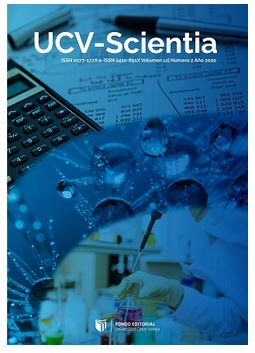Clinical - epidemiological characteristics of patients hospitalized due to Kawasaki disease
DOI:
https://doi.org/10.18050/RevUcv-Scientia.v8n2a2Keywords:
Kawasaki disease, Clinical - epidemiological characteristicsAbstract
Kawasaki disease (KD) is a self-limited, acute systemic febrile vasculitis that mainly affects children. The research was a descriptive, cross-sectional and retrospective study. Pediatric patients hospitalized for Kawasaki Disease at Hospital Belén of Trujillo were studied during the period January 2007 to August 2016. The youngest age at which KD was diagnosed was 10 months and the oldest age was 5 years 8 months, with an average of 2.6 years. The results of laboratory tests may include alterations in the blood count, liver function tests, biochemical profile. In the urinary sediment examination, 40% of the patients had leukocytosis, 60% had a high "C" Reactive Protein (CRP), 60% had high Globular Sedimentation Rate (GSR), 60% with anemia, 60% with Thrombocytosis, 20% with elevation of transaminases, 20% altered lipid profile and hyperbilirubinemia, and 40% of patients with sterile pyuria. It is concluded that KD has a low incidence in our population and it is typical of male patients under 5 years of age. The main clinical criteria found in the cases were persistent fever and changes in lips and oral mucosa. The main laboratory findings were elevated anemia, thrombocytosis, GSR and CRP.
Downloads
Published
How to Cite
Issue
Section
License

This work is licensed under a Creative Commons Attribution-NonCommercial 4.0 International License.
- Share — copy and redistribute the material in any medium or format
- Adapt — remix, transform, and build upon the material.
- The licensor cannot revoke these freedoms as long as you follow the license terms.
Under the following terms:
-
Attribution — You must give appropriate credit, provide a link to the license, and indicate if changes were made. You may do so in any reasonable manner, but not in any way that suggests the licensor endorses you or your use.
- No additional restrictions — You may not apply legal terms or technological measures that legally restrict others from doing anything the license permits.













